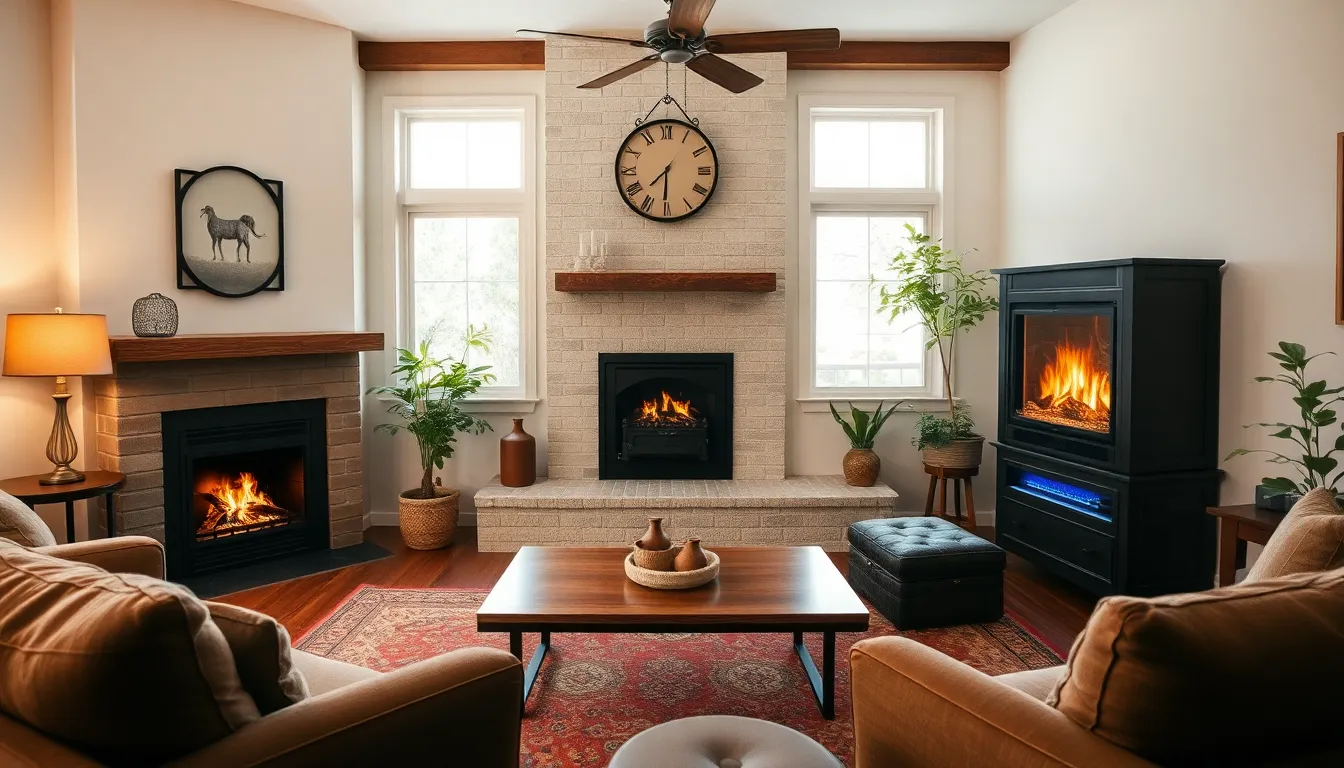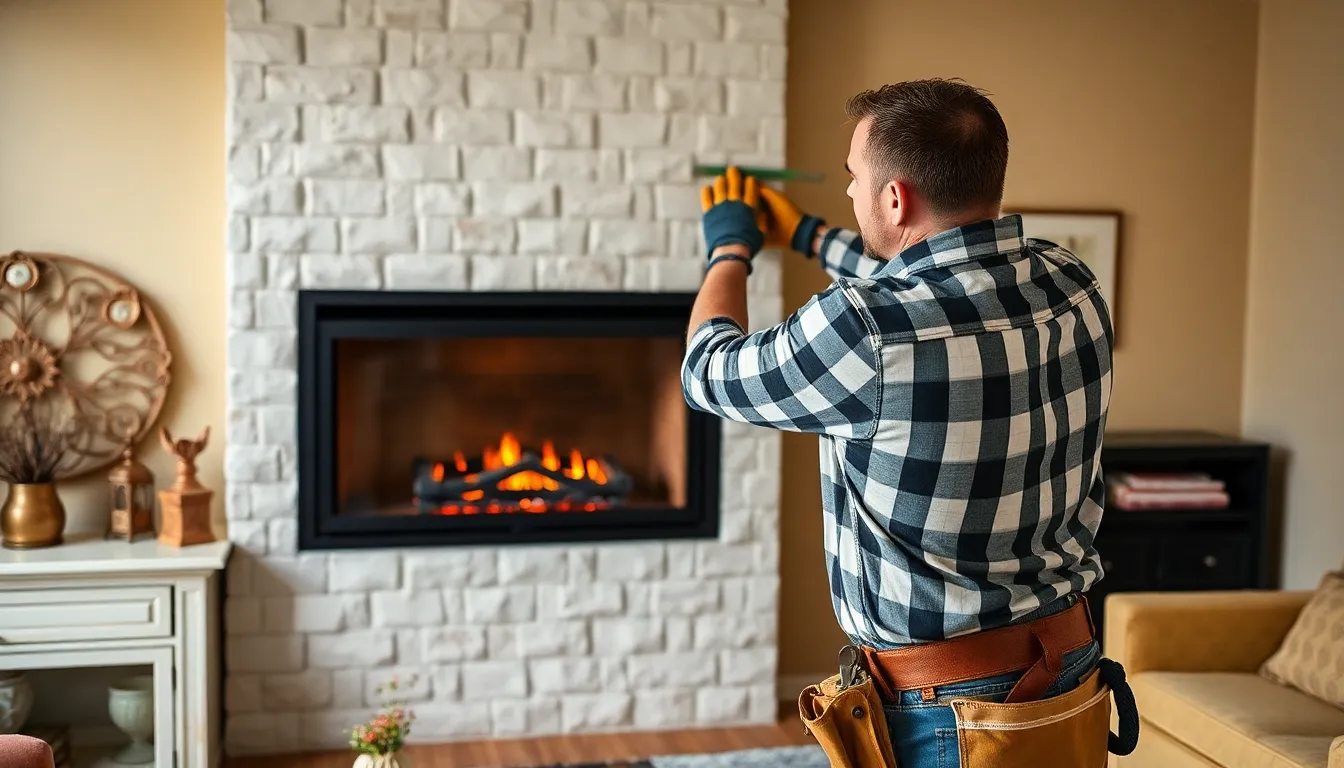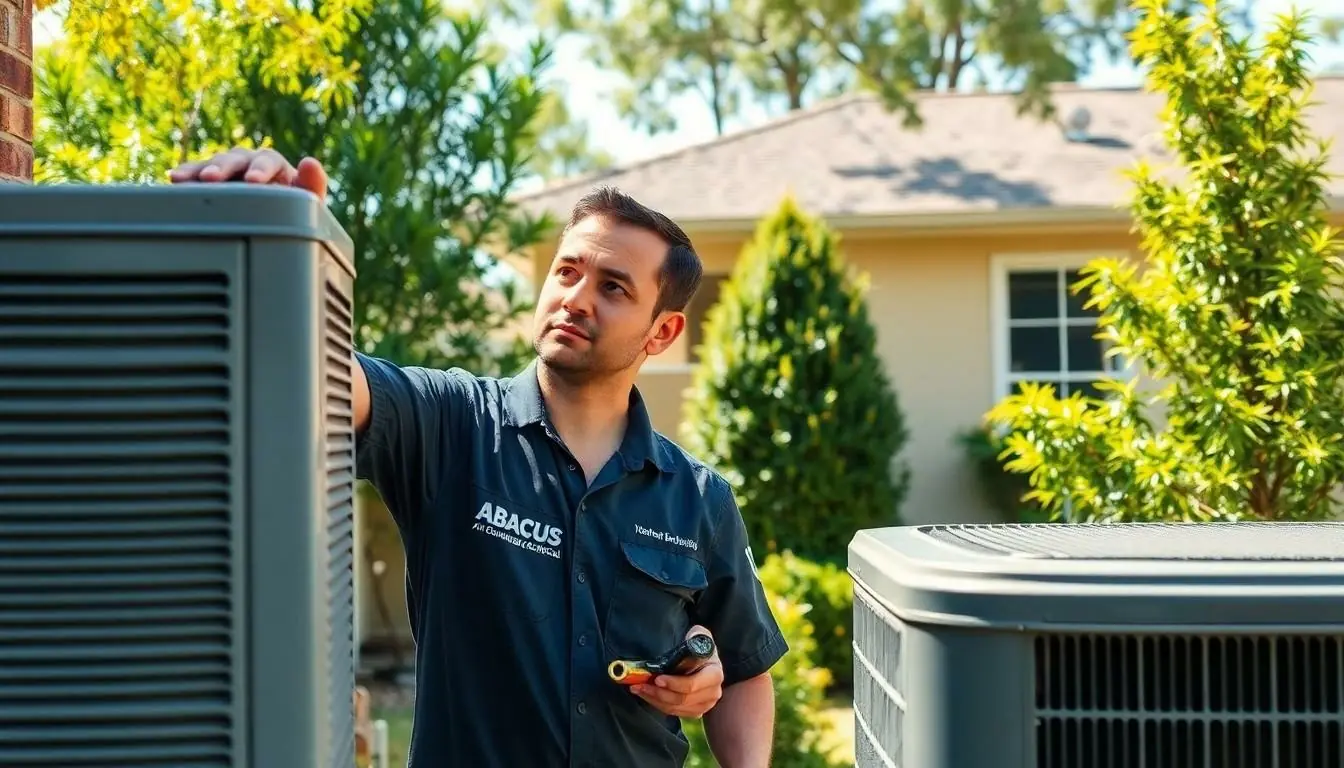Table of Contents
TogglePicture this: a chilly evening, a cozy blanket, and the gentle crackle of a fire dancing in your brand-new fireplace. Sounds like a scene from a holiday movie, right? But wait—before you dive into the world of warmth and ambiance, there’s one crucial step: installation. It’s not just about picking out the perfect hearth; it’s about ensuring it’s done right.
Overview of Fireplace Installation
Fireplace installation requires careful planning and execution. The first step involves choosing the right type of fireplace, whether it’s electric, gas, or wood-burning. Each type serves different purposes and has specific installation requirements. Once the choice is made, selecting a suitable location for installation becomes crucial. The location should comply with local building codes and safety regulations.
Preparing the site for installation includes measuring the space accurately. Measurements determine the proper size and type of fireplace, ensuring it fits well within the designated area. Next, it’s essential to consult with a professional installer for advice and assistance. An experienced installer offers insights on ventilation, chimney requirements, and clearance distances.
Installing a fireplace also involves the correct assembly of components. Proper connection to gas lines, electrical systems, and chimney flues ensures safe and efficient operation. Participants in the installation process must also consider flooring and wall materials to prevent fire hazards. Installing heat-resistant materials around the fireplace protects nearby structures.
Timeframes for installation vary based on fireplace type and complexity. Electric fireplaces typically require less time to install compared to gas or wood-burning options. Planning for inspections after installation might also be necessary to meet safety standards.
Successful fireplace installation hinges on careful selection, precise measurements, expert assistance, and adherence to safety regulations. Following these steps guarantees a reliable and enjoyable fireplace experience.
Types of Fireplaces

Understanding different fireplace types helps in making informed choices during installation. Several primary options exist, including wood-burning, gas, and electric fireplaces.
Wood-Burning Fireplaces
Wood-burning fireplaces provide traditional ambiance and warmth. These units typically require a chimney for smoke ventilation. Installing a wood-burning fireplace often involves selecting non-combustible materials and ensuring proper clearance distances. Maintenance includes regular chimney inspections to prevent creosote buildup. The setup may require additional permits depending on local regulations. Many homeowners appreciate the authenticity and aesthetic appeal of wood flames.
Gas Fireplaces
Gas fireplaces offer convenience and efficiency through instant heat. Venting options depend on the type, with options like direct vent or vent-free units. Connecting to a natural gas line requires adherence to safety codes. Often, gas fireplaces include a thermostat for temperature control. These units produce less soot and fewer emissions than wood-burning styles, contributing to cleaner indoor air. Homeowners favor gas fireplaces for their ease of use and low maintenance.
Electric Fireplaces
Electric fireplaces present a hassle-free solution with minimal installation requirements. These units typically plug into standard outlets, eliminating the need for venting. They often feature customizable settings, allowing users to adjust heat levels or display flickering flames without actual fire. Safety features like automatic shut-off mechanisms enhance user confidence. Electric fireplaces work well in spaces where traditional venting isn’t feasible. Many people enjoy the flexibility and versatility offered by electric options.
Benefits of Fireplace Installation
Installing a fireplace brings numerous advantages that enhance home comfort and appeal. Each benefit contributes to a more enjoyable living space and an overall improvement in property value.
Aesthetic Appeal
A fireplace serves as a focal point, adding character to a room. Stylish designs fit various decor styles, from rustic to contemporary. Unique materials can create a stunning visual effect, making a home feel warm and inviting. Homeowners often enjoy the ambiance that a fireplace creates during gatherings or quiet evenings. Artfully placed lighting around the fireplace can enhance its visual impact, further elevating overall decor.
Energy Efficiency
Fireplaces improve energy efficiency by providing supplemental heating. Gas and electric models especially offer options that conserve energy while keeping spaces warm. Homeowners using wood-burning fireplaces can utilize them for heating during colder months, reducing reliance on central heating systems. Advanced technologies in modern fireplaces help maintain optimal temperature control, cutting heating costs. Efficient designs minimize heat loss, ensuring that rooms stay comfortable with lower energy consumption.
Increased Home Value
Adding a fireplace can significantly boost a property’s market value. Homes with this feature tend to attract buyers looking for cozy and inviting spaces. A well-installed and appealing fireplace enhances curb appeal, making a lasting impression. Potential homeowners often view fireplaces as desirable amenities that elevate living standards. According to real estate experts, a fireplace can yield a return on investment, making it a smart choice for those considering future resale potential.
Installation Process
The installation process demands attention to detail and adherence to safety standards to ensure optimal fireplace performance.
Pre-Installation Considerations
Choosing the right location plays a critical role in fireplace installation. Local building codes influence placement, ensuring compliance and safety. Prioritize accurate measurements to confirm that the fireplace fits seamlessly into the chosen space. Identifying the specific type of fireplace affects installation requirements. Wood-burning units require a masonry chimney, while gas options necessitate proper venting. Consulting with a licensed installer offers insights on clearance distances and gas line connections, promoting safe operation and efficiency.
Step-by-Step Installation Guide
Begin the installation by assembling all necessary materials, including the fireplace unit and required tools. Once the location is prepared, install the framing if needed, ensuring stability. Next, follow the manufacturer’s instructions for positioning the fireplace according to local codes. Connect the gas line or electrical system as specified, ensuring no leaks or wiring issues. Finish the installation with heat-resistant materials to enhance safety. Test the unit thoroughly, verifying proper operation and addressing any potential issues.
Common Challenges and Solutions
Installing a fireplace presents several challenges, yet solutions exist for most issues. Ensuring compliance with local building codes often causes confusion. Consulting local regulations aids in avoiding potential pitfalls.
Choosing the right location poses another challenge. Practicing careful planning helps ensure adequate clearance from combustible materials. Always consider the room’s design and ventilation needs before finalizing the placement.
Measuring the installation site accurately is crucial. Miscalculations can lead to improper fit, resulting in additional costs. Taking precise measurements and double-checking them can mitigate this problem.
Connecting gas lines or electrical systems introduces complexity. Hiring a licensed professional prevents safety hazards related to gas leaks or electrical faults. Professionals ensure secure connections, adhering to safety standards for peace of mind.
Using heat-resistant materials often proves essential. Failure to do so can lead to fire hazards. Opting for certified materials helps minimize risks associated with high temperatures.
Installation timeframes vary significantly across fireplace types. Electric fireplaces typically require less time, while gas and wood-burning options need more detailed attention. Planning accordingly helps manage expectations and project timelines.
Regular maintenance is vital, especially for wood-burning units. Creosote buildup poses fire risks, demanding periodic inspections. Scheduling annual maintenance checks aids in sustaining long-term performance and safety.
Addressing ventilation issues becomes crucial for gas fireplaces. Poor ventilation leads to carbon monoxide buildup, posing health risks. Ensuring proper venting solutions eliminates potential dangers and creates a safer environment.
Each challenge during installation presents a chance to enhance safety and performance. Identifying potential issues early on enables proactive solutions, contributing to a reliable and enjoyable fireplace experience.
A well-installed fireplace transforms a home into a cozy retreat while enhancing its aesthetic appeal. By prioritizing proper installation techniques and safety standards homeowners can enjoy the warmth and ambiance that a fireplace offers.
Choosing the right type of fireplace is just the first step; ensuring it’s installed correctly is vital for optimal performance and safety. Engaging professional installers not only simplifies the process but also guarantees compliance with local regulations.
With careful planning and attention to detail homeowners can create a reliable and inviting space that adds value to their property. Investing in a fireplace is more than just a home improvement; it’s a decision that enriches everyday living.







